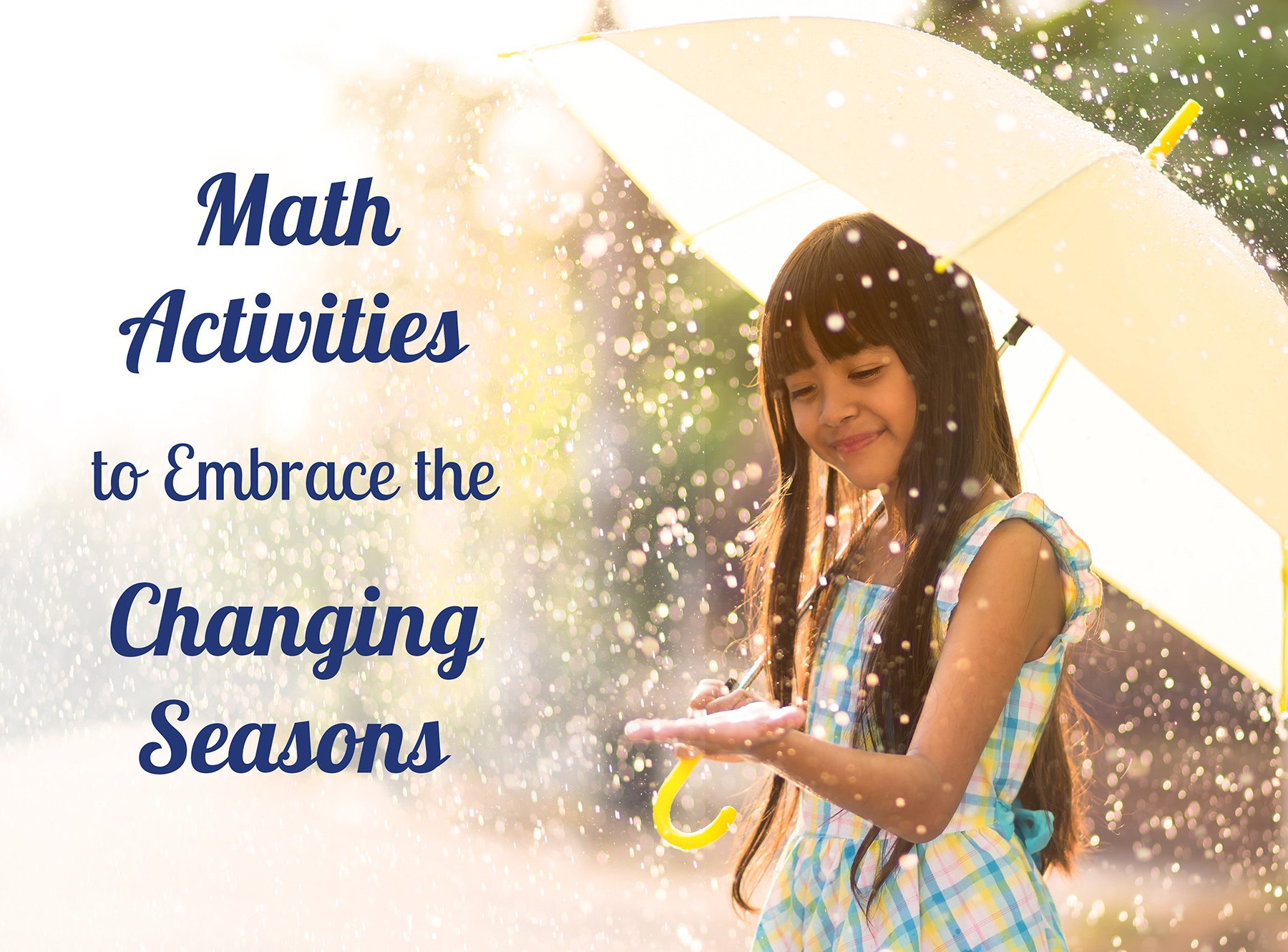
As February turns into March, those of us in the northern hemisphere experience the turn from winter to spring. This month’s blog post explores five different season-shifting ideas for practicing a wide range of math skills with your young learners.
Bar Graphing with Weather
Weather graphing is always a fun, quick, and sometimes artistic activity! All you need is a sheet of graph paper or a template like Super Teacher Worksheet’s. If you’re making yours from scratch, you get to choose how specific you want to be with your weather categories. Make sure to at least include sunny, cloudy, rainy, and snowy.
Choose one of two ways to make your daily observations.
Use the weather at a specific time each day.
Wait until the next day and pick the best overall weather description. If it was sunny for an hour but cloudy the rest of the day, which should you graph? It might just be the perfect chance to talk to your children about patterns and general trends!
Consider using different colors for each bar on the graph. Also consider labeling each bar with the date.
2. Reading Data and Adding Decimals: Precipitation
Depending on where you live, this time of year can be very snowy, rainy, or both! Talk to students about precipitation and how temperature makes the difference between rain and snow. Spring is known as a rainy season, after all!
Weather stations track precipitation daily, usually to the hundredths place. Now it’s time to get in some practice reading data. Add the daily values together to keep a running precipitation total, making note of what form the precipitation took based on the temperature.
For older students, you can practice simple data measures like dividing by the number of days to find daily averages across a week or month, or organizing the values to find the median.
3. Precipitation Puzzle Math Facts
On the topic of precipitation, there’s never a bad time for daily review of addition, subtraction, multiplication, and division math facts.
Cut out raindrop and snowflake shapes with construction paper. (You might also find packs of appropriately shaped tags from an arts-and-crafts or dollar store.) Then, one at a time, cut them using a triangular wedge shape so that the two pieces slot together. On each set of matching pieces, write a math problem (e.g., 5 + 3) and its answer (8). After all the facts are written, mix the pieces up and have students correctly match the problems and answers.
The seasonal shift from snow to rain can add another dimension to your practice. Consider transitioning from simple facts on snowflakes (such as addition and subtraction, or single-digit addition only) to more difficult facts on raindrops (such as multiplication and division, or multi-digit addition). Alternatively, use the same kinds of facts on all the cards, but choose which card set you use daily based on the low temperature being above or below freezing.
4. Sunrise and Sunset Time-Telling
As we move toward the vernal equinox, sunrise comes sooner and sunset comes later. Even with that pesky daylight savings, the time between the two grows longer.
Use the daily sunrise and sunset times to practice reading clocks. You can even make a manipulable clock using a template like this one.
Then practice elapsed time skills to calculate the growing amount of daylight each day. Don’t be surprised if it’s not exactly 12 hours apart on the equinox itself!
5. Geometry and Fractions with Garden Planning
What better way to anticipate the spring than by planning a garden and working on a ton of valuable math skills at the same time? Let your kids’ creativity run wild as they plan their dream flower or vegetable garden.
Start by picking planter sizes. How long should it be? How wide? Stop to calculate the perimeter and area. (For example, a 5 foot by 3 foot planter has a perimeter of 16 feet and area of 15 square feet). How deep should it be? Stop to calculate the volume of soil you’ll need. (If that planter was a foot deep, that’s 15 cubic feet.) Stick to simple rectangular shapes for younger learners, but don’t be afraid to branch out into composite shapes for those whose math skills are more advanced.
If you’re up for a challenge, work in fractions! Should half of the garden be daisies? A third? If a third of the 5 x 3 foot planter is used for strawberries, what does that fraction look like in terms of area and volume?